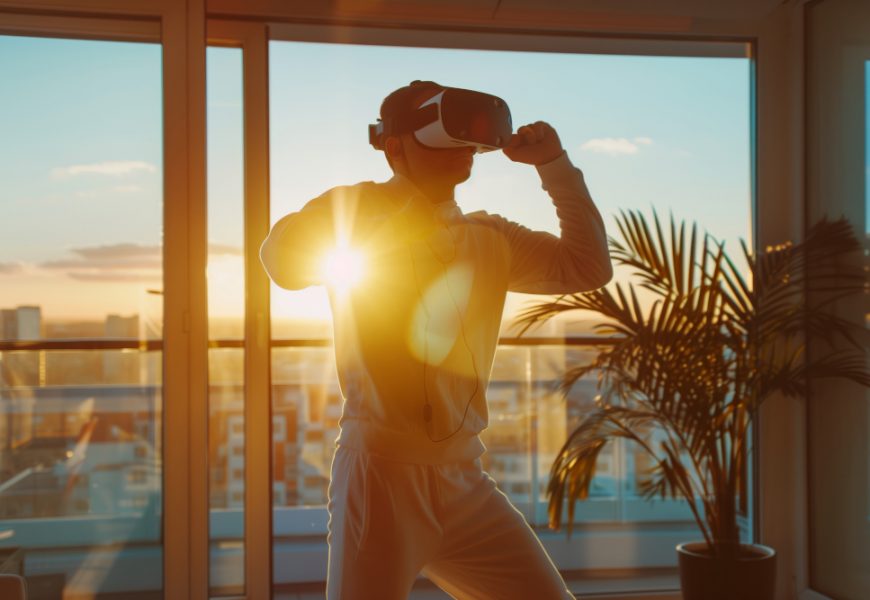We are living in an age where technology is no longer something that simply supports life—it permeates it. Artificial Intelligence (AI), predictive algorithms, and smart devices are steadily shifting from optional conveniences into the pillars of modern infrastructure. Homes that once relied on ordinary appliances now host intelligent devices that adjust lighting according to natural circadian rhythms, regulate temperature based on anticipated needs, and even suggest healthier meal options by analyzing grocery consumption patterns. These technologies may feel subtle, even invisible at times, but collectively, they create a seamless environment that both adapts to and influences human behavior.
This interconnectedness extends far beyond domestic life. Cities are evolving into data-driven ecosystems where sensors monitor traffic flow, predict congestion, and optimize public transportation routes. Healthcare providers are beginning to rely on AI-led diagnostics that can detect disease far earlier than human clinicians, offering preventative pathways tailored to each individual’s genetic and lifestyle data. Schools are experimenting with adaptive learning platforms, which mold their teaching pace and style to the strengths and weaknesses of each student rather than applying a one-size-fits-all approach.
The key thread running through all these changes is personalization. Data-driven technologies do not simply respond—they learn, adapt, and anticipate. This marks a fundamental departure from the past, where tools were inert and required human input at every juncture. Now, technology operates as a silent partner in everyday decision-making, shaping habits without always making itself known. The future we are walking into is not defined merely by faster processors, better connectivity, or cutting-edge designs; it is about an invisible yet deeply tangible transformation in how human life is lived.
Yet this shift also carries responsibility. As these systems gradually set the rhythms of our routines, important questions arise about privacy, ethics, and inclusivity. Who owns the data that fuels these processes? How do we ensure that adaptive systems benefit not just the tech-privileged but also marginalized groups who already face systemic barriers? The promise of technology is immense, but so too is the potential for misuse if society does not consciously shape its deployment toward equity and sustainability. The coming decades will not just reflect what machines can do, but also what humans decide they should be allowed to do.
While AI and smart devices may be the most visible aspects of technological change today, an even broader wave of innovation promises to transform life in more profound ways. Biotechnology, for example, is pushing the boundaries of what it means to heal, with gene editing tools like CRISPR enabling precise alterations that can correct inherited diseases. Personalized medicine is shifting healthcare away from treating symptoms to optimizing individual wellness on a molecular level. For patients, this could mean an era where healthcare is not just reactive but proactively tailored to one’s biology.
Simultaneously, renewable energy technologies are redefining humanity’s relationship with the planet. Advances in solar efficiency, wind power design, and energy storage are turning conversations about climate change from despair into possibility. Cities of the future may operate as net-zero ecosystems, producing as much clean energy as they consume while drastically reducing dependence on fossil fuels. Everyday life would not only be more sustainable but more secure, as resilience against resource scarcity becomes built into the infrastructure.
Transportation too is on the cusp of transformation, with autonomous vehicles and smart transit networks set to reshape how people and goods move. Beyond convenience, the potential here is radical: a reduction in accidents caused by human error, increased accessibility for individuals with disabilities, and entirely new models of urban planning where fewer cars mean more space for green, walkable, human-centered environments.
Meanwhile, immersive technologies such as augmented and virtual reality are expanding human interaction and education. Remote classrooms, medical training simulations, and collaborative workspaces enable people from different continents to co-create and learn as if they were in the same room. Combined with the rapid rollout of next-generation communication networks like 5G and eventually 6G, the distinction between “local” and “global” grows thinner, unlocking new forms of cultural exchange and economic collaboration.
But with these opportunities come urgent dilemmas. Technological advancement risks widening the gap between the haves and the have-nots if access remains unequal. Questions about digital privacy loom large in a world where personal data powers customization. Labor markets face disruption as automation challenges traditional employment structures. Environmental stewardship, too, requires vigilance, as even clean technology relies on materials and supply chains that must be managed responsibly.
This moment in history is therefore more than a chapter in digital innovation—it is a crossroads. Unlike previous industrial revolutions, which unfolded over generations, today’s changes are occurring at an unprecedented pace. The responsibility of shaping this trajectory lies with policymakers, businesses, educators, innovators, and everyday citizens alike. The core challenge is not simply in creating new tools but in ensuring that those tools expand opportunity rather than exacerbate inequality, that they build dignity rather than diminish it. Progress is not inevitable; it must be cultivated with ethical intentionality.
Future technologies are not just conveniences; they represent a fundamental reshaping of human life. From AI-driven personalization to biotechnology, renewable energy, and immersive communication, the rhythm of daily activity, the health of entire populations, and the sustainability of our planet are being redefined. The changes are subtle yet profound, global yet intimate, promising yet precarious.
As we stand at this pivotal moment, the deepest question is not only what technology is capable of, but what humanity chooses to do with it. Tomorrow’s everyday life will not simply be a reflection of machines and networks—it will be a reflection of the values, decisions, and commitments we make today.









